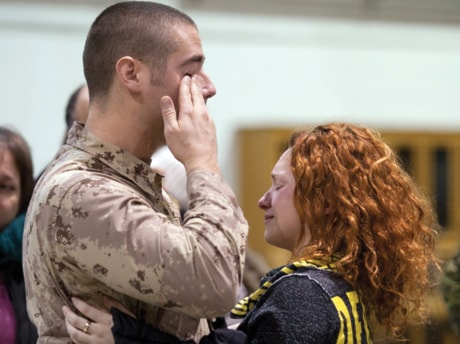ZANGABAD, Afghanistan — NATO’s offensive through restive western Kandahar this fall seems to have caught the Taliban off guard.
American and Canadian troops uncovered several large stockpiles of semi-prepared homemade bombs during their push into the area known as the horn of Panjwaii.
Many of the explosives were either very old or missing their power sources.
Maj. Pierre Leroux, the commander of Alpha Company from the 1st Battalion, Royal 22e Regiment, says it appears insurgents in the notorious Zangabad area simply up and left their compounds — perhaps in a hurry — when the initial U.S. assault wave hit.
“This push was a surprise for them,” Leroux said in an interview Thursday with The Canadian Press. “They were probably expecting something last summer.”
The offensive to clear the Taliban has unfolded in stages since the early summer, with different regions of the war-racked province cleared at different times.
The final phase, which is currently underway in western Panjwaii, has seen a combined force of Canadian, American and Afghan troops replace U.S. paratroopers, who stormed into the region in October.
Leroux said everything went quiet over the last few weeks and not all of it can be attributed to the onset of winter. He said he believes the insurgents have retreated to regroup.
They have faced only sporadic roadside bomb attacks since deploying earlier in the week.
“Right now, it’s too calm,” Leroux said. “It can’t last. I think, at this moment, they’re reorganizing.”
Alpha company, along with Afghan army units, have started digging in at a former Taliban compound that once housed a madrassa. The walls inside the white concrete building, which was pitted with gunfire, are still scratched with Islamic sayings and slogans.
On Thursday, Master Cpl. Kyle Getchell of the 1st Combat Engineering Regiment was filling sand bags to cover the blown-out windows of the school.
Getchell, who is on his second tour of Afghanistan, said it was good to be standing in Zangabad — a place that has sent shivers down the spines of many Canadian soldiers.
“It feels like the tide has turned, because there are so many people out here now — between Canadians and Americans, it’s crazy,” he said.
The scattered series of mud-walled compounds near the Registan desert has been fought over repeatedly since 2006 with the Taliban always maintaining an iron grip on the region and its people.
Leroux said he had expected a hostile reception from villagers, but that hasn’t been the case thus far — something he attributed to the realization that NATO and Afghan forces were establishing a permanent presence in the area, unlike in the past.
“I’m pleasantly surprised at how people are accepting us here and are happy we are here because they believe at this point we’re here to stay,” he said.
NATO wanted to follow up on the military operation with a demonstration in governance.
The Panjwaii district leader, Haji Baran, was flown to Zangabad on a military helicopter and held a brief meeting with 17 local elders.
The Taliban used the school where the Canadians had set up base as place for public executions, said Baran.
“Where you and I are standing, in those trees, they used to hang people,” he said, motioning to the spot behind the building.
“I’m very pleased to be here now beginning a time for the people of this area.”
